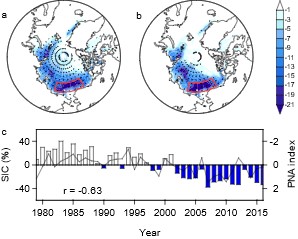Zhongfang Liu 1✉, Camille Risi2, Francis Codron3, Xiaogang He4, Christopher J. Poulsen5,
Zhongwang Wei 6,7, Dong Chen8, Sha Li9 & Gabriel J. Bowen10
1 State Key Laboratory of Marine Geology, Tongji University, Shanghai, China.
2 Laboratoire de Météorologie Dynamique, IPSL, CNRS, Sorbonne Université,Paris, France.
3 Laboratoire d’Océanographie et du Climat (LOCEAN), IPSL, CNRS, IRD, Sorbonne Université, Paris, France.
4 Department of Civil and Environmental Engineering, National University of Singapore, Singapore, Singapore.
5 Department of Earth and Environmental Sciences, University of Michigan, Ann Arbor, MI, USA.
6 Guangdong Province Key Laboratory for Climate Change and Natural Disaster Studies, School of Atmospheric Sciences, Sun Yat-sen University, Guangzhou, China.
7 Southern Marine Science and Engineering Guangdong Laboratory (Zhuhai), Zhuhai, China.
8 Nansen-Zhu International Research Centre, Institute of Atmospheric Physics, Chinese Academy of Sciences, Beijing, China.
9 Department of Earth System Science,Tsinghua University, Beijing, China.
10 Department of Geology and Geophysics, University of Utah, Salt Lake City, USA.
✉email: liuzf406@gmail.com
Abstract
Recent rapid Arctic sea-ice reduction has been well documented in observations, reconstructions and model simulations. However, the rate of sea ice loss is highly variable in both time and space. The western Arctic has seen the fastest sea-ice decline, with substantial interannual and decadal variability, but the underlying mechanism remains unclear. Here we demonstrate, through both observations and model simulations, that the Pacific North American (PNA) pattern is an important driver of western Arctic sea-ice variability, accounting for more than 25% of the interannual variance. Our results suggest that the recent persistent positive PNA pattern has led to increased heat and moisture fluxes from local processes and from advection of North Pacific airmasses into the western Arctic. These changes have increased lower-tropospheric temperature, humidity and downwelling longwave radiation in the western Arctic, accelerating sea-ice decline. Our results indicate that the PNA pattern is important for projections of Arctic climate changes, and that greenhouse warming and the resultant persistent positive PNA trend is likely to increase Arctic sea-ice loss.
Full Article: https://www.nature.com/articles/s41467-021-21830-z



